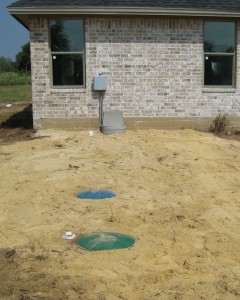 About 45,000 onsite wastewater treatment systems are installed annually in Texas to treat wastewater from rural and suburban homes as well as from small businesses. An onsite wastewater treatment system collects, treats, and applies wastewater to the soil.
About 45,000 onsite wastewater treatment systems are installed annually in Texas to treat wastewater from rural and suburban homes as well as from small businesses. An onsite wastewater treatment system collects, treats, and applies wastewater to the soil.
By definition, wastewater managed by an onsite system cannot leave the property where it is generated. The water can evaporate into the air, transpire through plants, or move through the soil to groundwater.
An effective onsite system removes wastewater from the home, treats and distributes the wastewater, and protects our water resources.
Selecting the appropriate system for the site conditions is critical to the system’s success. If you select the wrong system or design, or install, operate or maintain the system improperly, it can fail, which could result in pollution of your property and your neighbors. You could also be fined.
Because homeowners are responsible for conducting or contracting for operation and maintenance of a system, they should be involved in selecting the technology, or type of system used.
State regulations The Texas legislature passed a law (HB 1875) in 1987 to regulate onsite sewage facility (OSSF) systems statewide. The law called for regional and local governments—such as counties, cities, river authorities and special districts—to implement and enforce onsite sewage regulations with approval and oversight by the Texas Commission on Environmental Quality (TCEQ).
Although the state law has since been modified and expanded, its basic intent remains: The state sets minimum standards, and local authorities can adopt more stringent rules if the TCEQ approves them.
Related Resources:
 Selecting and Permitting (and in Spanish)
Selecting and Permitting (and in Spanish)
Find a licensed OSSF professional through the Texas Commission on Environmental Quality
